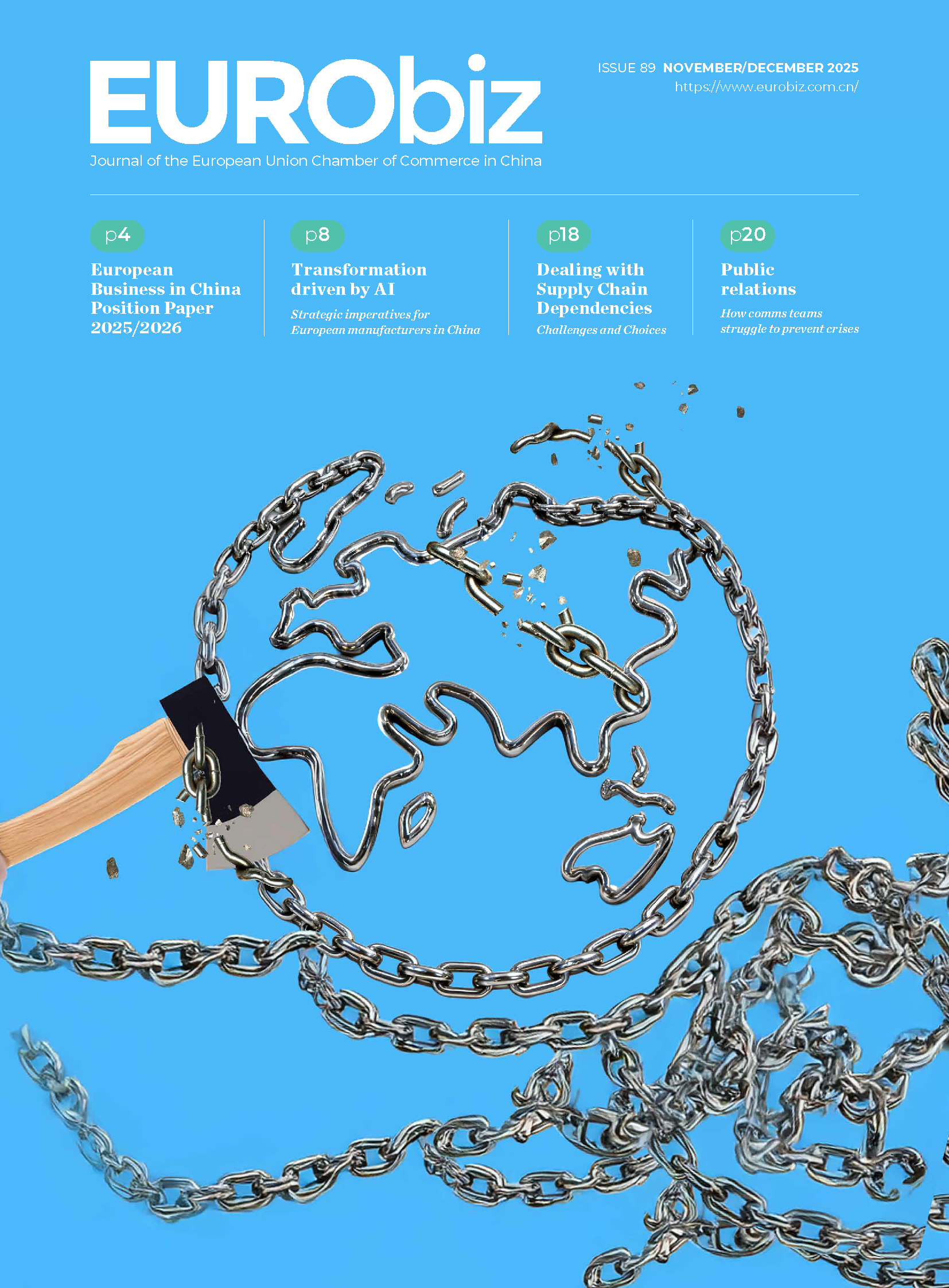 European Chamber Vice President Bertrand de la Noue explains why the Executive Committee took the important decision to reorganise the Chamber’s working groups and how this will improve member interaction with Chinese authorities while ensuring that our messaging is more consistent.
European Chamber Vice President Bertrand de la Noue explains why the Executive Committee took the important decision to reorganise the Chamber’s working groups and how this will improve member interaction with Chinese authorities while ensuring that our messaging is more consistent.
When was the idea of working group reorganisation first mooted, and what led to this discussion taking place?
Working group activities are the backbone of the European Chamber. It is where members can meet and exchange ideas with their peers, develop their advocacy arguments, begin the process of drafting their position paper and have opportunities to engage with Chinese government authorities, as well as Chinese professionals.
Historically, in order to encourage members’ involvement, the European Chamber has basically given members carte blanche to create as many working groups as they wished, in every part of the country. While this has achieved the aim of increasing member engagement, working groups were sometimes formed without too much control, and this consequently led to some overlaps between different groups. Such was the enthusiasm of our members that we ended up with 52 working groups by the end of 2014. Imagine, we had seven working groups dealing just with energy matters!
The down side was this began to exert a lot more pressure on the Chamber’s business managers, and often our messages lacked consistency. Because of this the Executive Committee took the decision last year to begin the process of restructuring working groups.
By having fewer working groups, does the Chamber run the risk of being less representative of the broad range of EU businesses that it represents?
No, on the contrary, having fewer working groups should improve the interaction between members. It will also result in higher quality work, with contributions coming from different angles and regions. This in turn will greatly improve their outreach and advocacy power.
What will happen to the members of the working groups that cease to function, or those that are going to be absorbed by other working groups?
This regrouping process took almost one year complete, and we moved from 52 working groups at the end of 2014, to 25 working groups now. During this process, we ensured that no issue or theme handled by a working group would be orphaned, so that every member of a former working group would find a place to discuss and advocate the issues of interest to their business. It also needs to be kept in mind that the majority of the restructuring consisted of geographical regrouping, merging two or three working groups previously based in different cities that handled the same topic.
Did you encounter any resistance to this process from any of the working groups?
I wouldn’t call it resistance, but of course there was some natural concern, and this is fully understandable. So, we didn’t rush into this process, and we took our time to explain, to meet the working group representatives, to receive their input, to modify our plans several times accordingly. Each revision was thoroughly reviewed by the Executive Committee before the new organisation was finalised.
In what ways are the roles of working group chairs and vice chairs going change?
This is a key element of this reorganisation. Our objective is to give a more pre-eminent role to the chairs and vice chairs. We want them to be more vocal, more visible at a national level and to really carry the voice of their working group. We also want them to work more closely with the Executive Committee – honestly, this was just not possible with 52 chairs. They will also have an important role in ensuring that their working group comes with a strong and unified message. This cannot and should not be done by the Executive Committee, but we fully understand this will not always be easy.
What are the main results the Chamber is looking to achieve through this reorganisation process?
Stronger working groups with committed leadership carrying their message at a regional and national level, and more efficient support to the working group from the Chamber. This last point is also important: with less working groups, we will have more dedicated business managers, focusing more on content rather than logistics for meetings and pure administration.
Will this process affect the way that the Chamber’s Executive Committee functions?
Yes, the Executive Committee will have improved interaction with the working group chairs. Chairs should take a more active role in lobbying activities and will be invited on a regular basis to attend Executive Committee meetings to address working group issues.
What will happen if the need to add further working groups emerges in the future?
Of course, we don’t have a rigid policy and a working group number that is cast in stone…but at the same time the door is not fully open either. We will have to carefully review the need on a case-by-case basis, to see if subjects are already covered by an existing group, as well as gauging the number of members interested in joining any proposed new working group. If it is good for our members, and not only for one or two, we will add one. It also needs to be understood that if a working group is not working, it will cease to be a working group. This is a truism, or what we call in French a lapalissade!



Recent Comments